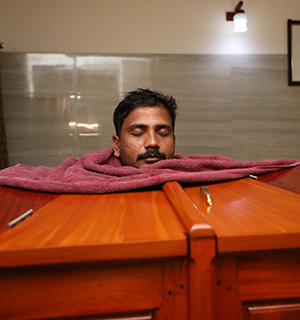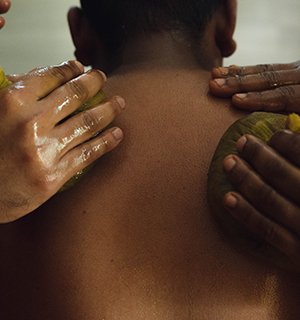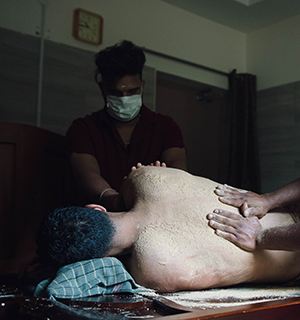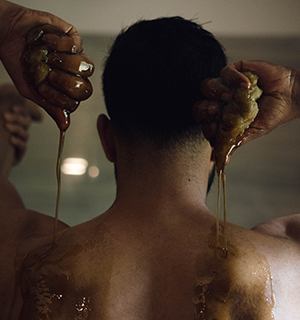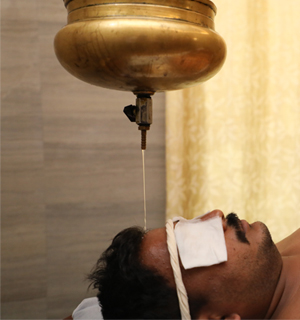Ayurveda
Ayurveda is considered Upaveda of Atharva Veda. Ayurveda emphasizes on 4 purusharthas (Dharmartha Kama moksha) as the ultimate goal of one’s life. Ayurveda is a science of longevity. Ayurveda has mentioned every spiritual aspect (Divine beings, Gods and Goddesses, Vastu Shastra, Jyotish Vignana, Scriptural chanting etc) and science (Anatomy, Physiology and Pathology) collectively forming the principles (Causes and Treatments) of Ayurveda.
“Swasthasya Swastha Rakshanam, Athurasya Vikara Prashamanam”
Ayurveda’s foremost goal is to maintain the health of a healthy person (Preventive Medicine),
and to heal the ailing.
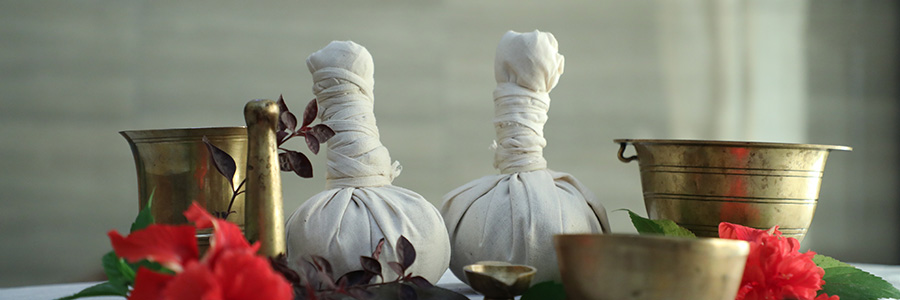
Ayurveda has 3 main treatment modalities that form the basic foundation of Ayurveda therapies
1. Yukti Vyapashraya Chikitsa
Ayurveda offers a wide range of therapies that can be classified into two categories: shodhana(purification) and shamana (pacification) which is decided by the Vaidya based on his knowledge about the disease and its prognosis, hence the word Yukti Vyapashraya Chikitsa.
SHODHANA
Shodhana therapies are designed to eliminate toxins (ama) from the body and mind through methods such as cleansing (panchakarma) and fasting.
SHAMANA
Shamana therapies are designed to balance the doshas and enhance the immunity (ojas) of the body and mind through methods such as herbal medicines (ausadhi), diet (ahara), lifestyle (vihara), yoga (asana), meditation (dhyana), bahya karma (external therapies with oils/decoctions/powders) etc.
Abhyantara Chikitsa
It includes Panchakarma which is one of the most important treatments in Ayurveda that involves five therapies to cleanse and rejuvenate the body, mind and consciousness. They are:
Nasya
This is a process of administering medicated oils or powders through the nose to clear the nasal passages and sinuses.
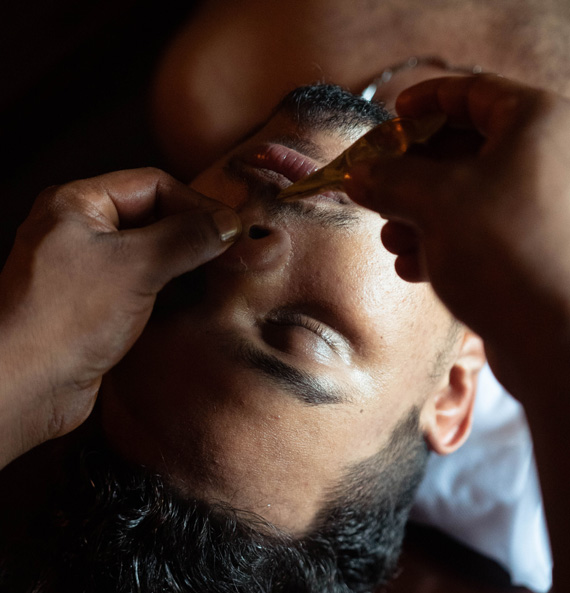
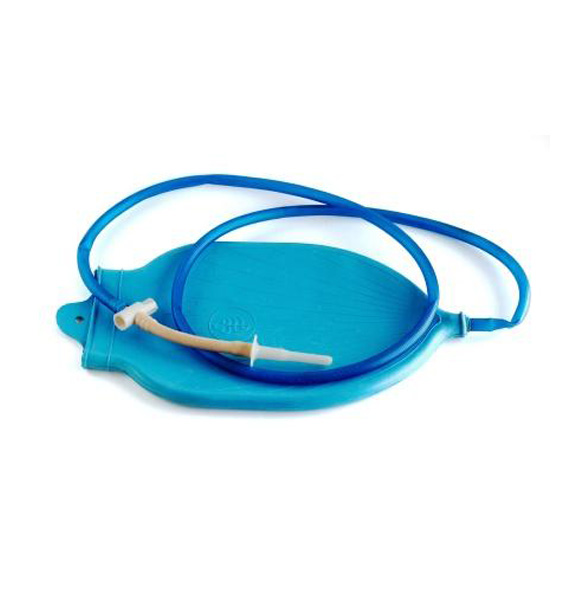
Basti
This is a process of administering herbal decoctions or oils through the rectum to cleanse and nourish the colon and the nervous system.
Raktamokshana
This is a process of removing impure blood from the body using leeches, needles or other methods, which is a localized treatment based on the condition treated.
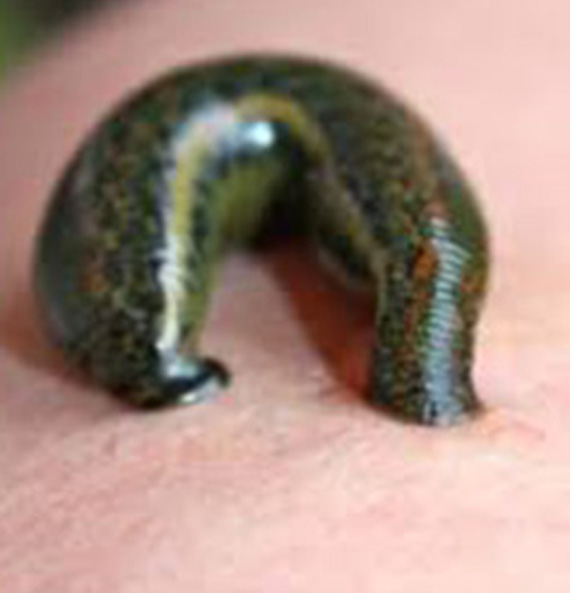
Panchakarma treatments are not suitable for everyone and should be done under the guidance of a qualified Ayurvedic practitioner. They require proper preparation, supervision and follow-up to ensure safety and effectiveness. They also involve dietary and lifestyle changes to support the cleansing process and maintain the results.
Variety of Ayurvedic formulations in the form of asava, arishta, bhasma and pishti, churna, ghrita, guggulu, kashayam and kwath, lehyam and avaleha, rasayana, thailam, vati, gutika, and more are prescribed based on the healthcare need.
Bahya Chikitsas include
Sarvanga Abhyanga
Body Massage and head massage with medicated oils/ghee
Pizichil
Pouring of warm oil on the body
Shirodhara
Oil/Medicated butter milk/Decoction/ Medicated milk is poured over the forehead
Njavara Kizhi or Shastika Shali Pinda Sweda
Fomentation through medicated rice
Ela Kizhi or Patra Potali sweda
Fomentation through medicinal herbs
Podi KIzhi or Choorna Pinda Sweda
Fomentation through medicated powder
Jambira Pinda Sweda (JPS)
Fomentation with medicated lemons and herbs
Kati Basti/Janu Basti/Prista Basti/Greeva Basti
Allowing warm oil to stay on affected area for stipulated time (Low back, Knees, Spinal Column, Neck respectively)
Udwartanam
Body massage with medicated powders to reduce fat content Pichu- Cotton dipped in warm oil/medicine is allowed to stay on affected parts for stipulated time
Lepa
Application of medicated paste on the affected parts
Avagaha
Immersion bath in medicated decoction etc
Shastra Chikitsa or Surgery
Diseases that are incurable through means of shodhana and shamana are treated through surgical procedures, which is also a part of Yukti Vyapashraya Chikitsa Paddati.
2. Daivavyapashraya Chikitsa
Daiva(Supernatural/Supreme/Divine/God) because Ayurveda also considers astrology as part of it, hence clearly indicates certain shanti karmas to pacify the effects of grahas (planets) and our sins/bad karmas. The methods adopted are- Mantra Chanting, Use of amulets/Talisman, wearing gems, Homa/Havana/Yagna, Fasting, Visiting temples/Pilgrimage, Atonement, Charity, Offerings to God, Following the scriptural rules, Auspicious ceremonies, Chanting Lord's names/hymns and complete surrender to the Supreme.
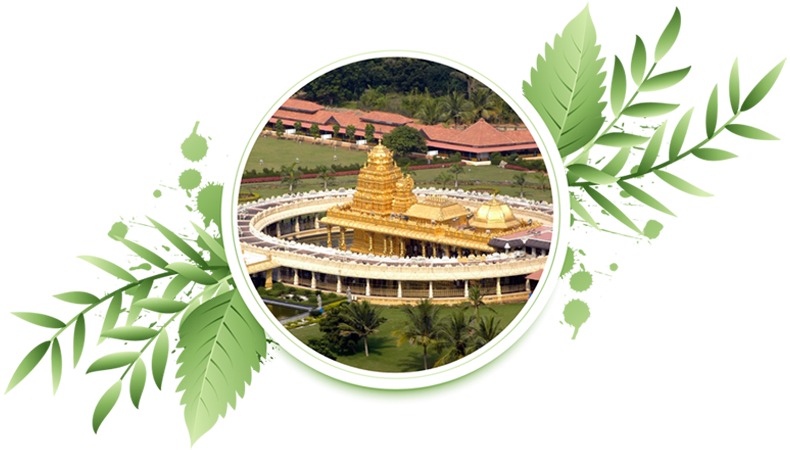
3. Satvavajay Chikitsa
The right conduct, physically, mentally and morally.
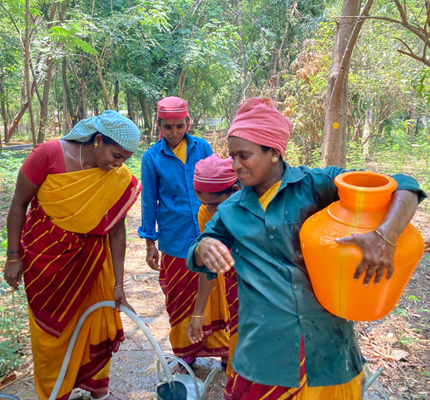
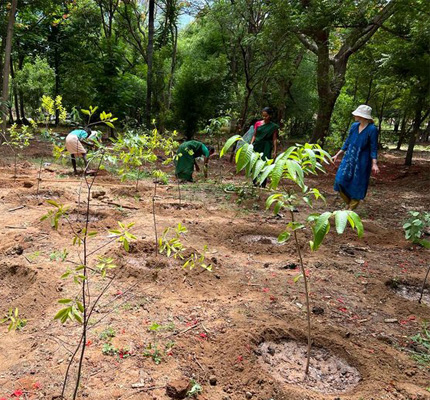
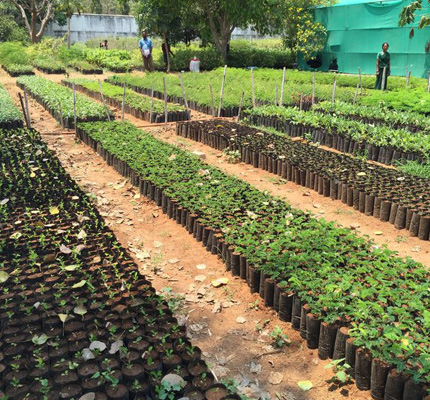
Conclusion
Ayurveda is an ancient yet modern system of medicine that has a lot to offer for today’s health- conscious people. It is a science of life that can help one achieve optimal health and happiness by following its principles and practices. It is a way of living that can help one connect with oneself and nature by respecting its laws and rhythms. It is wisdom that can help one discover one’s true potential and purpose by understanding one’s constitution and nature.
What is Ayurveda?
Ayurveda is an ancient holistic system of medicine that originated in India. It focuses on maintaining balance in the body, mind & spirit to promote overall health and well-being.
Origin of Ayurveda?
Ayurveda originated in ancient India over 5,000 years ago. It is considered one of the world’s oldest holistic healing systems. The term ayurveda comes from Sanskrit words ‘Ayur’ (life) & veda (knowledge),reflecting its focus on promoting health & balance through natural means
Founder of Ayurveda?
Lord Dhanwantari is a revered figure in Hindu Mythology & Ayurvedic tradition. He is considered the divine physician and it is often depicted holding a pot of rejuvenating nectar symbolizing healing & well-being. Lord dhanwantari is believed to have emerged from churning of the cosmic ocean during an event known ‘samudra manthan’ bringing with him the knowledge of ayurveda & its principles to benefit humanity. He is considered an important figure in the history of Ayurveda, but the ancient sage & physician ‘Charaka’ is often referred to as the Father of Ayurveda. He is credited with compiling the charaka samhitha, one of the most important & earliest texts on Ayurvedic medicine
Is Ayurveda evidence based?
Ayurveda is a traditional system of medicine that has been practiced for thousands of years & is based on principles and concepts that were developed in ancient times. While Ayuveda has a long history and has been used to treat various ailments, it is important to note that its practices & treatments may not always align with modern scientific standards of evidence-based medicine. Some aspects of Ayurveda have been subject to scientific research, & there is ongoing debate about the effectiveness & safety of certain Ayurvedic treatments. It’s recommended to approach Ayurveda with a critical and informed perspective, especially when considering its use for serious health conditions. If you are considering Ayurvedic treatments, it’s a good idea to consult with a qualified healthcare professional who is knowledgeable about both modern medicine & Ayurveda.
What are the common Ayurvedic Treatments?
Ayurvedic treatments encompass a variety of holistic approaches to health and wellness. Some common ayurvedic treatments include herbal remedies, massage therapies like abhyanga , detoxification practices such as panchakarma, dietary adjustments based on individual constitution (dosha) , yoga & meditation, and the use of specific oils & spices for various health purposes. Keep in mind that it’s important to consult with a qualified Ayurvedic practitioner before trying any treatments
Any side effects with Ayurvedic Medicines?
Ayurvedic medicines can have both positive effects & potential side effects, just like any other form of medication. Side effects can vary depending on the specific ingredients used, individual health conditions, & dosage. It’s important to consult with a qualified Ayurvedic practitioner or healthcare professional before using any Ayurvedic medicine to ensure it’s safe and appropriate for your specific needs.
How does Ayurveda view the concept of balance of mind & body?
In Ayurveda, the concept of balance is central to achieving overall well-being. It emphasizes maintaining equilibrium between the body , mind & spirit .The balance is achieved through the interplay of the three doshas ( Vata ,Pitta , Kapha) which represent different elemental energies in the body .Ayurveda views health as a state of harmonious interaction between these doshas. Imbalances lead to physical & mental disorders. Life style choices , diet , herbs , meditation , yoga are used to restore and maintain this balance.

